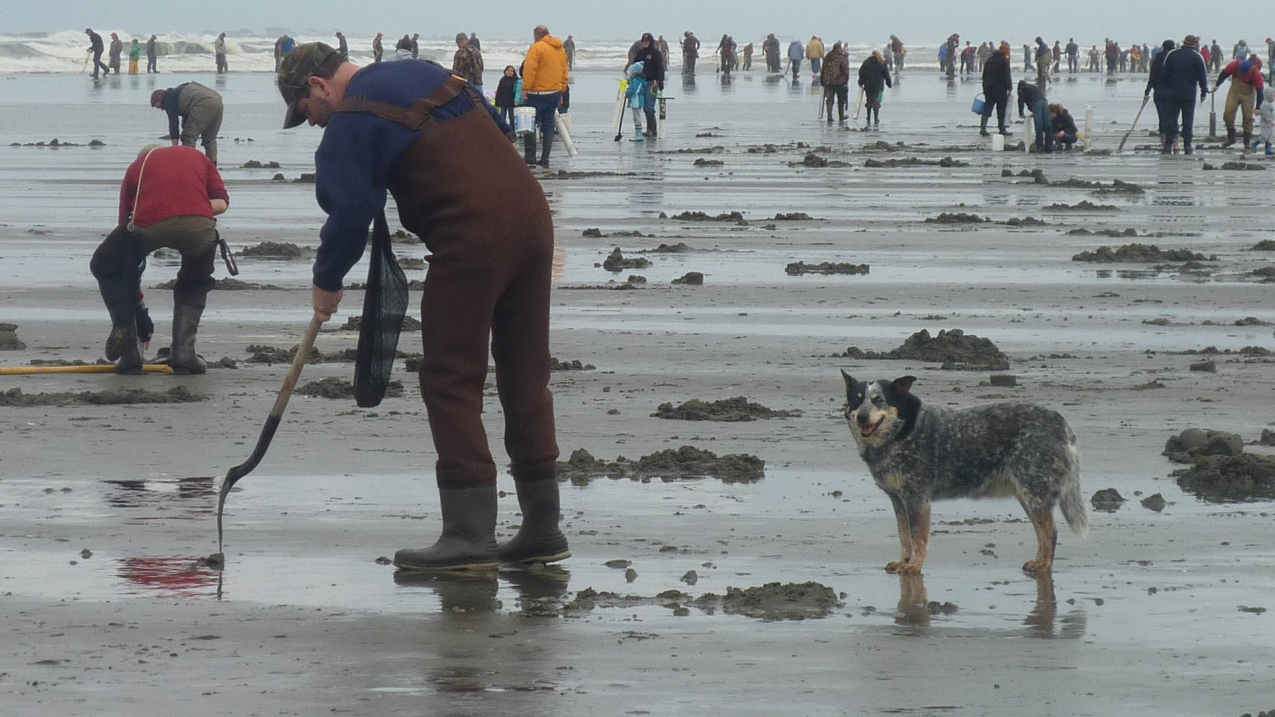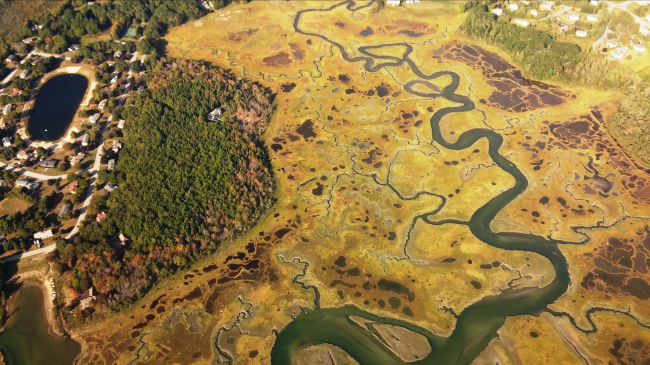Projects will help enhance monitoring and determine socioeconomic impacts of blooms

Clam diggers along the Washington state coast. (Image credit: NOAA)
NOAA is announcing funding of 17 new research projects around the country to better understand and predict harmful algal blooms (HABs) and improve our nation’s collective response to them.
NOAA’s National Centers for Coastal Ocean Science (NCCOS) allocated $10.3 million to harmful algal bloom research in fiscal year 2020 for work that will take place over the next three to five years. Approximately $4 million will cover the first year of 11 new projects, while $6.3 million will go to 16 projects already in process. New projects will begin in Alaska, California, Delaware, Florida and the Gulf of Mexico, the Great Lakes, New England, the Pacific Northwest, Puerto Rico and the U.S. Virgin Islands. A full list of the new grant awards is available online.
Award recipients will research enhanced detection of harmful algal bloom toxins and test control methods in both ocean and freshwater; model toxin movement through food webs; improve HAB forecasts; and investigate the social and economic impacts of blooms.
“NOAA is funding the latest scientific research to support managers trying to cope with increasing and recurring toxic algae that continue to affect environmental and human health of coastal communities,” said David Kidwell, NOAA NCCOS Competitive Research Program director. “These projects will address the largely unknown socioeconomic impact of blooms in various regions, improve local managers’ ability to keep drinking water safe, aid monitoring for algal toxins in seafood and advance a potentially valuable control method for Florida red tide and other blooms, enhancing our nation’s collective response to these events.”
The U.S. Integrated Ocean Observing System (IOOSⓇ) Office allocated $1 million for five pilot projects across six of its regional associations, to enhance the nation’s capacity for monitoring and detection of these blooms. The pilot projects focus on data integration and information services about the extent, toxicity, and length of blooms will inform decisions of coastal managers, seafood harvesters and aquaculture growers, drinking water utilities, animal stranding networks and others.
IOOS also awarded $325,000 in fiscal year 2020 through its Ocean Technology Transition program, an ongoing multi-year cooperative grant program, for the first year of a project that will benefit harmful algal bloom monitoring efforts. The funded project will advance ongoing efforts to gather water samples for harmful algal bloom monitoring using autonomous surface vehicles.
These funding decisions represent a coordinated effort to maximize advances in harmful algal bloom monitoring and forecasting. Prior NOAA-funded research produced tools that managers use regularly to detect, monitor, forecast and respond to the blooms and their toxins.
“We are excited about this opportunity to enhance critical capabilities at the regional scale that will improve the nation's ability to monitor, detect and respond to blooms,” said Krisa Arzayus, U.S. IOOS deputy director. “The IOOS investment leverages the national expertise of NCCOS and the knowledge and networks of the IOOS Regional Associations to improve harmful algal bloom data and information service delivery for the Nation.”
NCCOS delivers ecosystem science solutions for NOAA’s National Ocean Service and its partners, bringing research, scientific information and tools to sustain thriving coastal communities and economies.
IOOS is an interagency and national-regional partnership, led by NOAA, working to produce, integrate, and communicate high quality ocean, coastal and Great Lakes information that meets the safety, economic and stewardship needs of the nation.
Media contact:
Jerry Slaff, 202-236-6662



